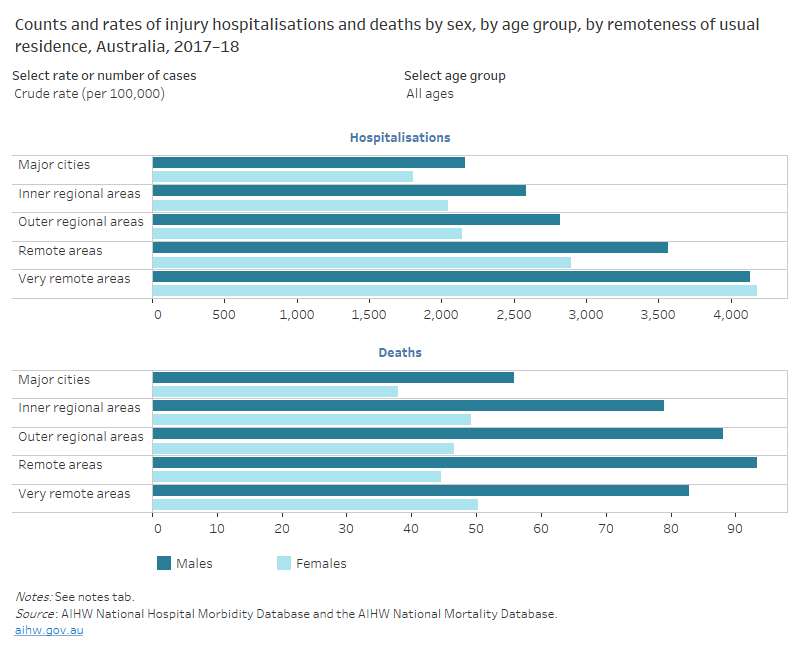Variation by age and sex
The pattern of injury hospitalisations and deaths was similar among males and females but differed in some age groups. The differences by age and sex can be explored in the data visualisation below (Interactive 1). In summary:
- for males and females, rates of injury hospitalisations increased consistently with increasing remoteness of usual residence
- rates of injury deaths among males increased with remoteness of usual residence and were highest in Remote regions
- rates of injury deaths among females were higher for residents of Very remote regions (50 cases per 100,000 population) compared with all other regions. The lowest rate of injury death for females was seen for residents of Major cities (38 cases per 100,000 population)
- rates of injury hospitalisations followed the same pattern of increasing as remoteness of usual residence increased for all age groups except for those aged 65 and over, whose highest rate of injury occurred for residents of Major cities
- rates of injury deaths follow a similar pattern by age to that of hospitalisations. For those aged 65 and over, the rate of injury death was highest for residents of Remote regions (203 cases per 100,000 population) followed by Major cities (184 cases per 100,000 population).
Interactive 1
This data visualisation consists of twin bar charts and tables on separate tabs describing counts and rates of injury hospitalisations and deaths by sex, by age group, and by remoteness of usual residence. A notes tab is also available. The reader can select to display by number or rate or age group.
The top bar chart shows that the rate of hospitalisations per 100,000 population rises with increasing remoteness of usual residence for both males and females.
The bottom bar chart shows that for males and females, the lowest injury death rate per 100,000 population is for residents of Major cities (55.9 for males and 37.9 for females). The highest rate for males was for residents of Remote regions (93.3) and for females was for residents of Very remote areas (50.3), although the rate for Inner regional regions for females was similar (49.2).



